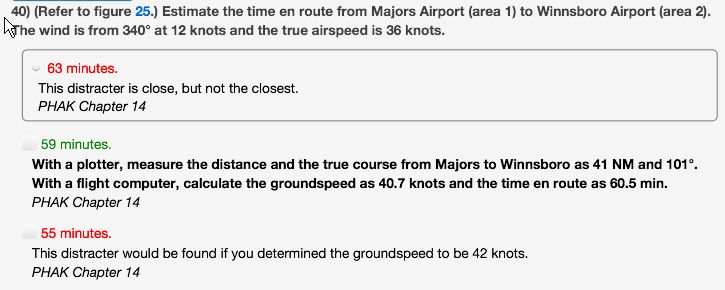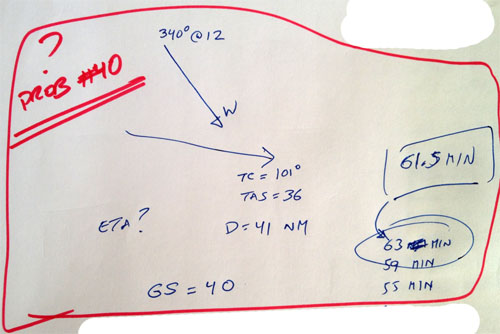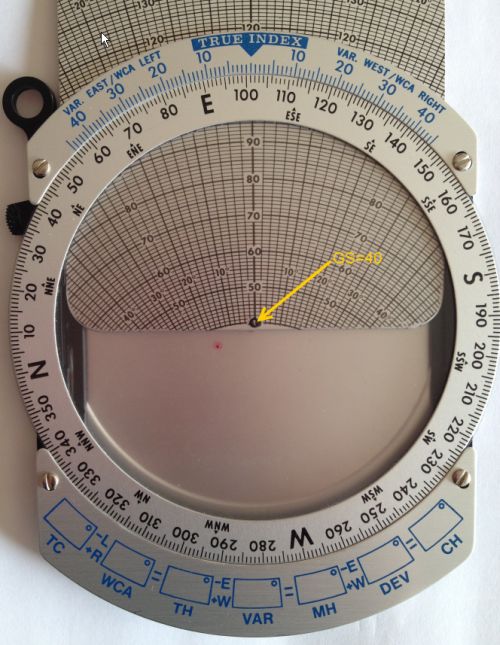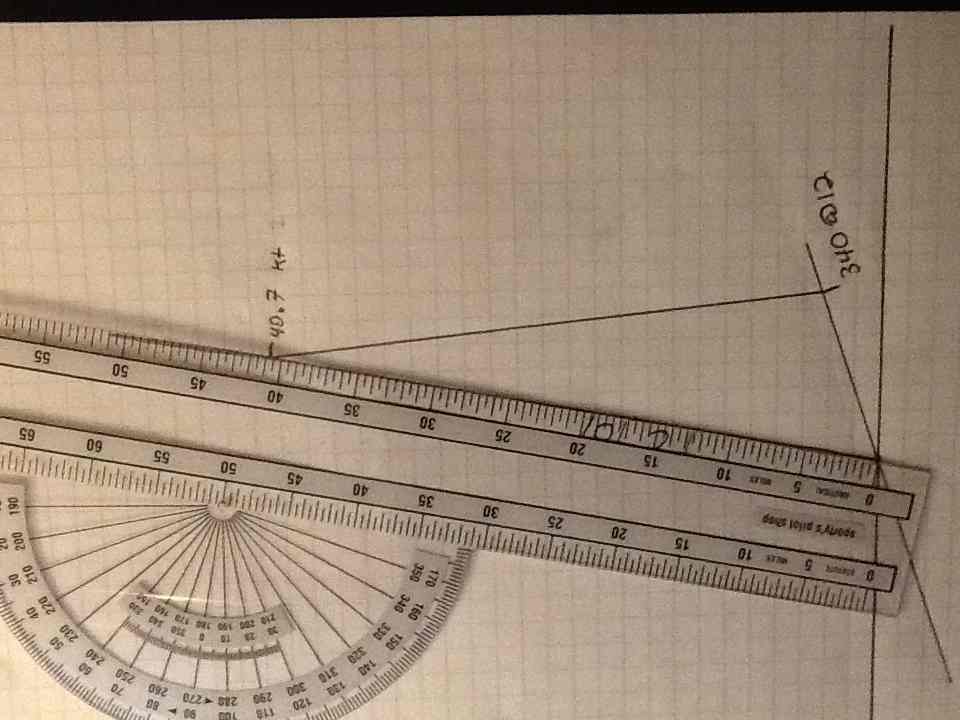eetrojan
Pattern Altitude
Help with Navigation Question on FAA Knowledge Test
Hi, wondering if somebody can help me figure out how best to fix some apparent error in my approach to a navigation question in the Sporty's test prep system.
Here's the problem, which I got wrong because I chose "63 min" rather than "59 min":

However, my measurement of true course was the same (101 deg.), and my measurement of the distance was the same (41 NM). Here are my scratch notes:

I used my E6B to determine a ground speed of 40 knots. Then, dividing distance (41 NM) by speed (40 knots), I get 1.025 hours, or 61.5 minutes. I chose 63 minutes because it's closer (delta is 1.5) than 59 minutes (delta is 2.5).
It seems that the error comes from my having determined a ground speed of 40 knots with my E6B, rather than 40.7. As you can see from the this photo, when I put the specified true airspeed of 36 knots under my red wind dot, the indicated ground speed (under the grommet) is 40. However, I have to estimate the location of the wind dot a little bit since it's supposed to be under 36 and my E6B's lowest speed is 40:

Is there any way to be more accurate with my E6B?
Thanks!
Joe
Hi, wondering if somebody can help me figure out how best to fix some apparent error in my approach to a navigation question in the Sporty's test prep system.
Here's the problem, which I got wrong because I chose "63 min" rather than "59 min":

However, my measurement of true course was the same (101 deg.), and my measurement of the distance was the same (41 NM). Here are my scratch notes:

I used my E6B to determine a ground speed of 40 knots. Then, dividing distance (41 NM) by speed (40 knots), I get 1.025 hours, or 61.5 minutes. I chose 63 minutes because it's closer (delta is 1.5) than 59 minutes (delta is 2.5).
It seems that the error comes from my having determined a ground speed of 40 knots with my E6B, rather than 40.7. As you can see from the this photo, when I put the specified true airspeed of 36 knots under my red wind dot, the indicated ground speed (under the grommet) is 40. However, I have to estimate the location of the wind dot a little bit since it's supposed to be under 36 and my E6B's lowest speed is 40:

Is there any way to be more accurate with my E6B?
Thanks!
Joe
Last edited:


